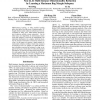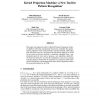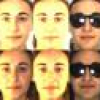AAAI
2010
13 years 2 months ago
2010
Multi-instance learning, as other machine learning tasks, also suffers from the curse of dimensionality. Although dimensionality reduction methods have been investigated for many ...
ML
2010
ACM
13 years 3 months ago
2010
ACM
When only a small number of labeled samples are available, supervised dimensionality reduction methods tend to perform poorly due to overfitting. In such cases, unlabeled samples ...
NIPS
2004
13 years 6 months ago
2004
This paper investigates the effect of Kernel Principal Component Analysis (KPCA) within the classification framework, essentially the regularization properties of this dimensional...
ACAL
2007
Springer
13 years 6 months ago
2007
Springer
This paper addresses the topic of how architectural visual experience can be represented and utilised by a software system. The long-term aim is to equip an artificial agent with ...
ICPR
2010
IEEE
13 years 7 months ago
2010
IEEE
—A novel non-linear dimensionality reduction method, called Temporal Laplacian Eigenmaps, is introduced to process efficiently time series data. In this embedded-based approach,...
FOCS
2006
IEEE
13 years 10 months ago
2006
IEEE
We investigate the optimality of (1+ )-approximation algorithms obtained via the dimensionality reduction method. We show that: • Any data structure for the (1 + )-approximate n...
ICML
2008
IEEE
14 years 5 months ago
2008
IEEE
In this paper we introduce a novel approach to manifold alignment, based on Procrustes analysis. Our approach differs from "semisupervised alignment" in that it results ...
CVPR
2008
IEEE
14 years 6 months ago
2008
IEEE
Linear Discriminant Analysis (LDA), which works by maximizing the within-class similarity and minimizing the between-class similarity simultaneously, is a popular dimensionality r...



